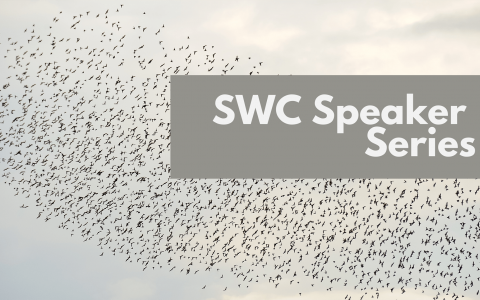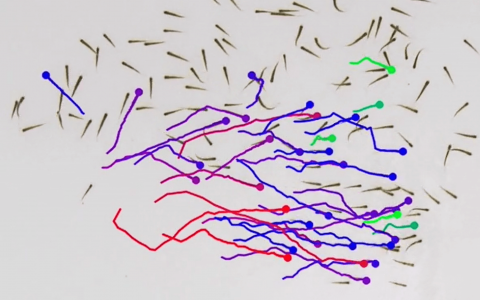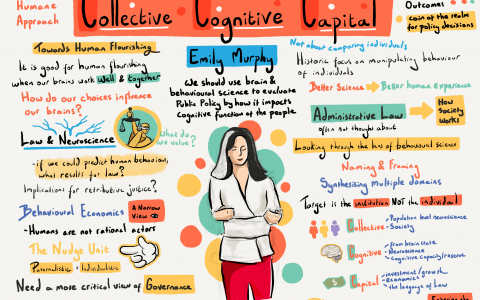
Unravelling the diversity of foraging strategies
An interview with Dr Ahmed El Hady, Max Planck Institute of Animal Behaviour, conducted by April Cashin-Garbutt
Foraging for food is critical for survival. This ubiquitous natural behaviour involves multiple different cognitive computations. Recent SWC Seminar speaker, Dr Ahmed El Hady, is working to unravel the diversity of foraging strategies across environments. In this Q&A, he explains how foraging opens up the opportunity for evolutionary comparison across species and how he hopes closing the loop between theoretical models, field studies and large-scale naturalistic experiments will shape the future of social foraging studies.
What first sparked your interest in studying foraging behaviour?
I had been working on decision-making during my postdoc but always in highly trained behaviours. For example, it would take 4 to 6 months to train animals on a task. I became interested in behaviours in which decision-making occurs that don’t require such training.
I began delving into foraging and I met Jacob Davidson, who became my longstanding collaborator. Jacob was working with Iain Couzin at the time. We began developing a modelling approach together. Jacob was working on a foraging problem in ants and I was working in trained behaviour. We decided to try use the quantitative model we developed for trained behaviour for these naturalistic decision-making tasks.
We were pleased to find it worked, but it was not very popular back then! People were worried about natural behaviours as they are more difficult to control and manage. Nowadays there is a much greater move towards studying naturalistic behaviours.
How many different types of cognitive computation do animals make when searching their environment for resources?
This is one of the big advantages of studying foraging behaviour. When we study trained behaviour, we focus on one particular cognitive computation, for example working memory. The nice thing about foraging is that there are many different computations happening simultaneously. First, there is the sensory perception as the animal perceives the input, then there are the integration processes and memory, decision-making, navigation and so forth.
By designing the environment in different ways you can make one or more computations more prevalent. But it gives us the opportunity to study these computations in parallel, whereas we used to typically study them in isolation.
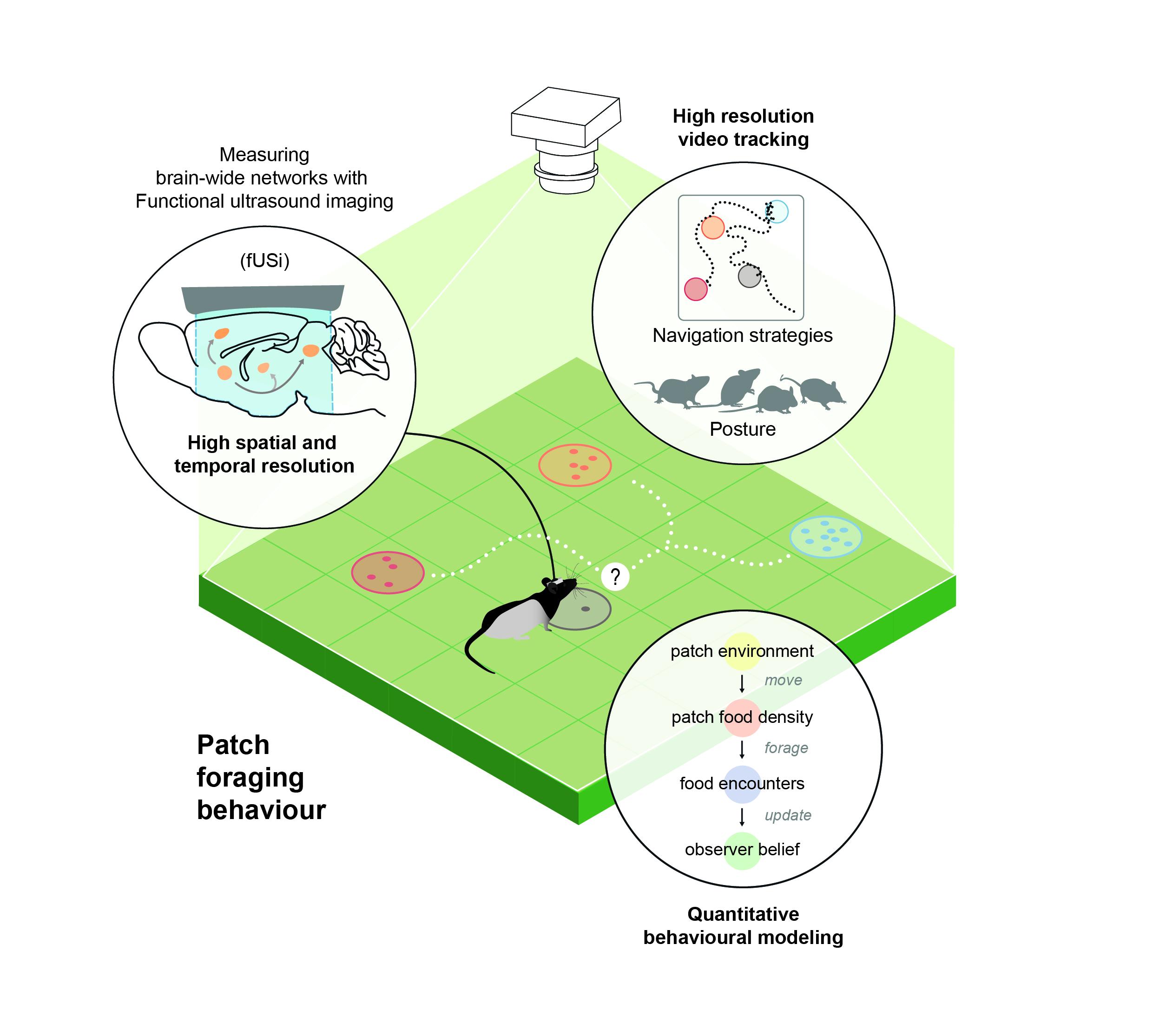
What models exist to explain how animals decide when and how to leave a patch of food?
The most dominant model is the marginal value theorem, which was pioneered at the University of Oxford and the University of St Andrews. There was a lot of history there of studying foraging in the behavioural ecology community. Behavioural ecologists focus on describing the behaviour in the field, whereas neuroscientists are interested in the mechanisms of implementation in the brain. And so, we looked to extend models that already existed in ecology.
How are you extending these models to the social foraging realm?
Let’s say the basis of the model I am proposing is called evidence accumulation. As the name suggests, I accumulate evidence on food for example. When an animal enters a patch, it eats some food and accumulates that evidence. This evidence tells it when to leave this patch of food to go to a place that is maybe safer or richer, depending on the environmental condition.
In the social realm, there may be two agents doing this evidence accumulation, but they are sharing some information with each other. They might cooperate by telling each other if the patch is richer. I made such an observation in a field study in Brazil with marmosets. They have a food call that they vocalise when they find a tree with lots of resources. Then their friends come by and they eat together. In comparison, capuchin monkeys have very tight groups and there are always conflicts. Thus the social coupling might be cooperative or competitive.
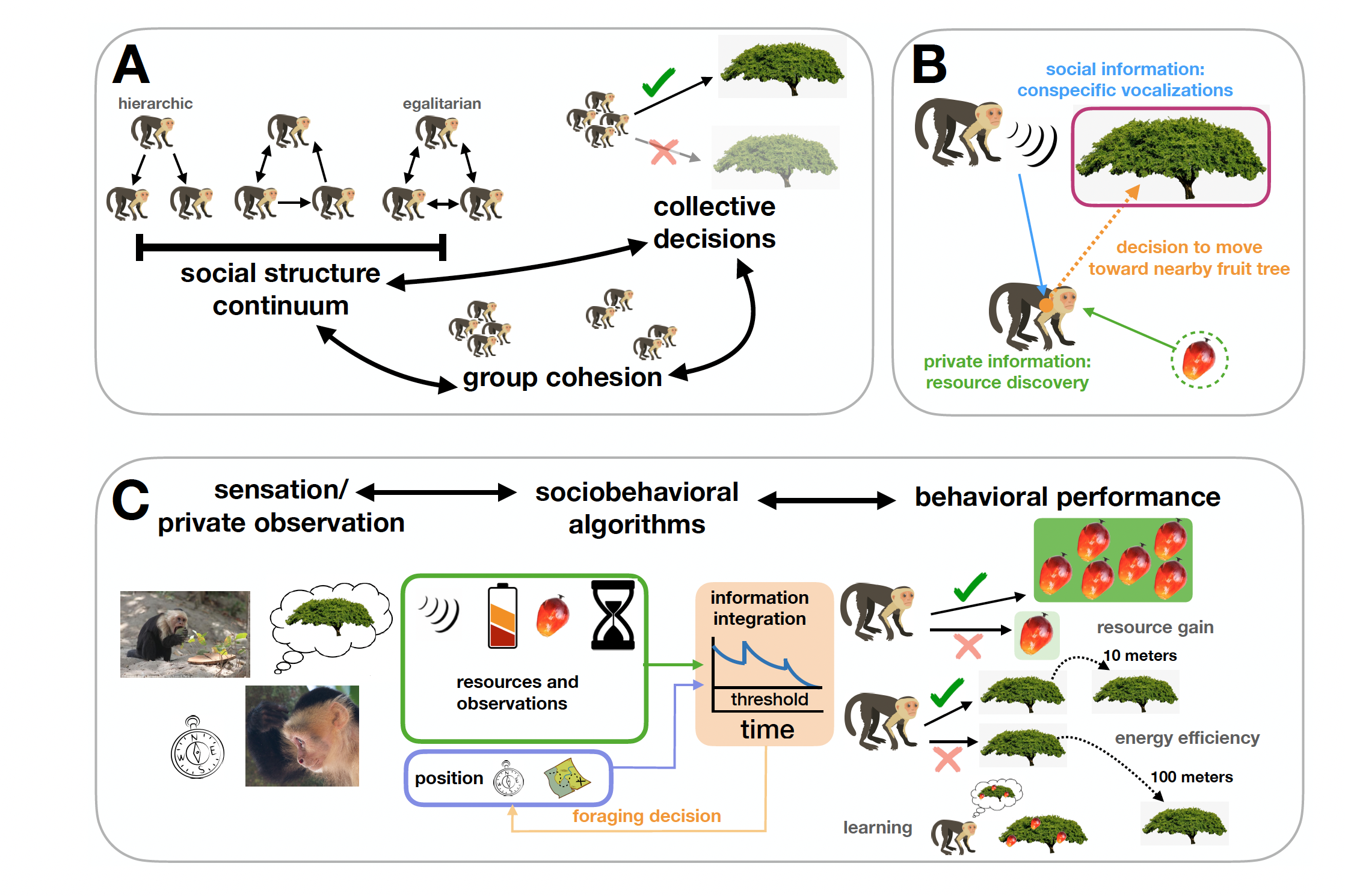
Do social dynamics change over time? How do you handle this?
Yes we recently uploaded a paper on bioRxiv about this where a group in Hungary observed changes in social dynamics over 9 months.
There was this predominant idea that there is an innate dominance. For example, innate alpha or innate beta animals. While this might hold for some primates or other animals, we found that in rats it is highly contextual to the resource distribution in the environment and also that it is unstable. In one environment an animal might be dominant, but in a different group with certain other conditions this individual might become submissive.
We are trying to develop a set of tools and algorithms to extract social structure, what we call dominance networks, that depend on how much animals groom each other, conflict, how much space they occupy and so forth. This is an emerging area and we call it social foraging because it’s not just social interaction but social interaction in the context of foraging and searching for resources.
Can you please explain how you are using models to compare data across a variety of species? Which species in particular are you focusing on?
We use the same model structure so I am hoping that as we study different species we might find, for example, that some are more impulsive than others, some estimate the world differently, some have different strategies under the same condition to leave the patch. This will tell us something about evolutionary logic that shaped our decision-making systems throughout our natural history as a species.
Evolution is really the lens within which we view how it is shaping biological systems, but it also shapes the cognitive computation. A lot of times neuroscientists talk as if they are creationists as they don’t talk about how things come into place. In this case, because we can compare and have some insights into other species, we can discover the parts that are changing over evolution and understand how it contributed to the survival of species.
In my lab, we are focusing on two particular species, locusts and rats. I have also set up experiments in Brazil with my collaborator where marmosets are indigenous and living there. These are the three species I focus on and they are representative of one invertebrate, a mammalian and a primate. I am also hoping to set up some VR social games with humans.
Foraging is such a universal behaviour that all animals do, so it gives us opportunity to ask behavioural evolutionary questions. How are behavioural algorithms evolving over time?
What have been your key findings so far?
My key contribution is to drive the interest in conceptualising these concepts in terms of evidence accumulation and statistical inference. When I first started studying foraging, many people asked how are you going to control and understand this? My key contribution is finding a recipe by which you can construct the environment in a way that you have some predictions about which decision strategies an animal might be employing in a particular environment.
What’s the next piece of the puzzle your research is going to tackle?
On the modelling side, the next piece of the puzzle is considering complicated spatial structures. For example, what happens if the animal is in a non-homogenous environment, so there is a patch with small number of resources and another patch further away with a large number of resources but a big space in the middle? So I’d like to introduce this as a variable in my quantitative models.
On the experimental level, the next step is being able to test some of the models with rats and see how the social dynamics change over time. How does it change the way I decide whether to exploit a patch or not and when I leave a patch when resources go from abundant to scarce.
What do you hope will be the main implications of your research?
I think the main implication will be to prove a point that we can get rid of extended animal training and study much more natural behaviours where the animals don’t have to be trained.
Secondly, I think we will be able to find decision circuits during this task that might overlap with what we already know from trained behaviour, so this will make the stronger point that we can get the same decision circuits by studying naturalistic decision making.
The third implication is that using foraging we can also ask questions about the contribution of the body plus the brain to this behaviour. We can look at how much energy the animal is contributing to the neural processing and to the behaviour. There is a whole community of people looking at the hypothalamus and other deep brain nuclei that affect metabolic states, but this community don’t often talk to people that are studying the cortex. In the context of foraging, you can basically put both together. For example, when an animal is hungry, hunger processing circuits in the hypothalamus for example are telling something to the cortex to produce an action to go satisfy this hunger. ‘What is it telling the cortex?’ and ‘how the cortex produce appropriate actions depending on the metabolic states?’ are two fascinating and open research questions.
To summarise we are establishing an integrative way to understand foraging as it is not only a neuro-centric behaviour, the body is also contributing as animals have to move which expends energy. Crucial to mention is that movement is also brain-mediated, so we cannot really separate brain and body during the study of foraging.

About Dr Ahmed El Hady
Ahmed El Hady is a multifaceted scientist and intellectual. He is currently a junior group leader at the center for advanced study of collective behaviour at University of Konstanz and the Max Planck Institute of Animal Behaviour. He did his postdoctoral work at the Princeton Neuroscience Institute where he studied the neural basis of decision making in rats and social-vocal communication in Marmoset monkeys. He obtained his PhD at the Max Planck Institute for Dynamics and Self organization where he worked on biophysics of the action potential and neuronal network dynamics. His current research interests are experimental and theoretical studies of foraging behaviours across the animal kingdom with a special emphasis on locusts and rodents.
